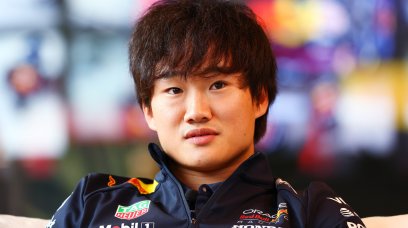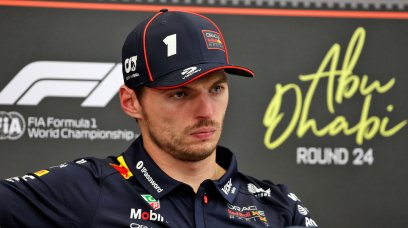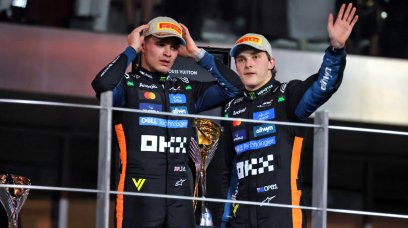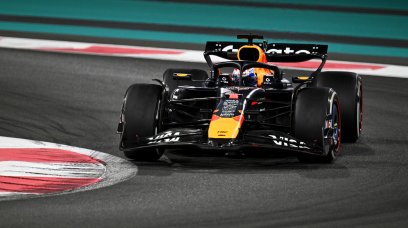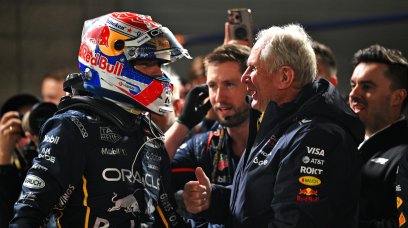The 2021 Belgian Grand Prix will without doubt go down as one of the lowest points in Formula 1's long history. Officially, just 6.88km counted towards the final race result, which is actually less than one lap of the Spa-Francorchamps circuit. This is due to the placement of the timing loops which confirmed Max Verstappen as the race winner, with George Russell picking up a maiden F1 podium in second, and Lewis Hamilton finishing in third place. Many will see the Belgian Grand Prix as a wasted afternoon. The start of Sunday's race at Spa-Francorchamps was initially delayed by half an hour before two attempts were made to start, with a gap of nearly three hours between them. Half points were awarded to the top 10 drivers despite the official Grand Prix distance being just one lap due to red flag regulations. During the Safety Car laps, most of the drivers said the visibility was dreadful, and that was the main issue. The standing water on the track, and the rain, was probably bearable given that previous races, such as Brazil 2016 and Japan 2007, brought up similar, if not worse, conditions. Arguably, there haven't been any races affected by torrential rain since that very wet afternoon in Sao Paulo, until the Belgian GP at the weekend. But there have been some significant changes. Article continues below image
Formula 1 introduced wider and faster cars in 2017 whilst the tyre width was increased by 25 percent. Perhaps one indirect consequence is in wet conditions, the cars create a lot more spray compared to a narrower F1 car. It was the lack of visibility at Spa that was the biggest problem for the drivers and why the race could never properly get underway. Pierre Gasly, who was classified in sixth place, says reducing the spray is an area F1 should look at. "I think we should work on trying to reduce the spray behind the cars, because that's the real thing," Gasly told RacingNews365.com and other select members of the press. "When I was watching the Medical Car, obviously going at much lower speed, but the spray is a lot less than what we do with our cars. "So I think that's one area where F1 should focus on for the next years, because if you reduce the spray and you have better visibility then OK, conditions are very tricky, you may have aquaplaning, you may have a lot of sliding, you might be very slow... "But then after it's up to us drivers to be at the limit of the grip we have, at least we see. And on Sunday, the problem was the visibility." Another problem which has gained traction in recent years is how dependant the current cars are on aerodynamics. Similarly to the tyres, they are very sensitive to the conditions which appears to be something that has only come about since 2017. Article continues below image
Williams, for example, have been very open about their struggles when it's windy, so rainfall must be a nightmare compared to wind. When travelling at slow speed, the cars lose temperature very quickly, which leaves the drivers with very little grip. This cycle gets worse the longer you run at slow speed, which Russell alluded to when describing the conditions . "Coming out of Turn 1, all the way up through Eau Rouge and into Turn 5, I felt like as soon as we were over probably 200km/h that [the] spray was just too drastic, and I had absolutely no idea where Max was," explained Russell. "It was probably more concerning for drivers behind me because they can't see me as well and I rarely got full throttle down the straights, and you were just losing tyre temperature as well. "The laps behind the Safety Car and everything, one after another, was just making it impossible out there. We may as well have been driving up the straight with our eyes closed at points because that's how it would have been had the race started." The bigger, wider F1 cars create more downforce, but in the wet conditions, they will create a lot more spray compared to a narrower car. Having 20 cars kick up X percent more spray than a field of cars from the mid-2000s is inevitably going to cause problems. There was relatively low wind at Spa on Sunday, too, despite the torrential rain, and the Kemmel Straight is surrounded by trees, so the spray simply hangs around in the air. Having bigger tyres will create more spray, even if it gets rid of the standing water. But standing water was not the problem. Sebastian Vettel hinted that the Bridgestone wet tyres which were used at the 2007 Japanese GP at Fuji created less spray than the current Pirelli wet tyre compound. "We did a long time behind the Safety Car [at Fuji]," said Vettel. "We had different tyres then. You know what I mean?" Vettel also says that the conditions on Sunday were better than the conditions on Saturday in Q3 when qualifying was stopped following Lando Norris' crash at Raidillon. "There was a lot more standing water, and it's just us on our own," explained Vettel. "The problem in racing is that you are following each other. "So you cannot start the race with [a] 15 seconds gap between the cars. Saturday, there was a lot more water on the track. "Sunday was a bit less and if you go around, you get rid of the water, but obviously the spray you don't get rid of."
Is there a solution?
Race-winner Verstappen said that the visibility was the biggest problem on Sunday, but also noted that the wet tyres don't have a lot of grip. "I mean the grip was low, we know that, in the wet," he said. "We don't have a lot of grip with these tyres. "But when you can't see where you are going, or you don't know where the car ahead of you is, that's never really nice, so you can't properly race like that." In qualifying, the Wet tyres were simply seconds slower than the Intermediates, even though the conditions should have suited the Wet compound quite well. At the beginning of Q1, the Williams drivers were over six seconds quicker than the rest of the field by using the Intermediates, whilst everyone else used the Wets. The Wet tyre compound has been criticised for many years by the drivers since Pirelli joined the sport. There was a similar situation at the 2017 Italian GP when Red Bull and other teams simply could not switch the Wet tyre on, despite the huge amount of rainfall. Early signs suggest that the new 2022 tyres will solve some of the overheating problems that the current dry tyre compounds have, so perhaps the focus should turn to having a Wet tyre compound that can create more grip when there is rain. Ultimately, the problem at the Belgian GP was visibility. There is not a lot you can do to change this, but some modifications to the tyres, or allowing the teams to break parc ferme rules to adjust the cars for wet conditions, may increase the chances of having wet weather races, which everyone loves. F1 cannot afford to back out easily when there is rain and over the last 18 months they have proven that they can adapt to situations. It's now time to show that classic wet races can still happen, meaning a repeat of the controversial events at the 2021 Belgian GP can be avoided in the future.
Most read
